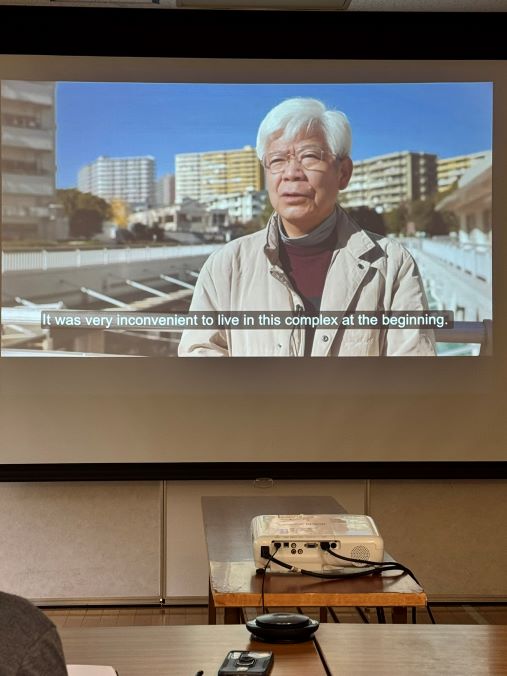June 3, 2025
Today was rainy, but visiting the Wakabadai housing complex left a real impression. The setup is rooted in the idea of multigenerational living. Elementary schools are within walking distance. Families stay connected over decades. People grow up here, raise their kids here, and stay connected even if they end up working elsewhere.
At the Himawari Community Volunteer Center, it was clear that this place runs on mutual support. Residents care for one another in a way that felt both natural and organized. The community bus that loops through the area is just one small example of how daily life is built around accessibility and connection.
 Wakabadai was established in 1979. Back in 1992, the population was over 20,000. By 2020, it had dropped to about 13,000, but the heartbeat of the community still feels strong. What stood out most was that the people presenting to us and those leading the activities weren’t outside professionals or rotating staff. They were residents. Longtime neighbors. People who know the rhythms of the place and are trusted because they’ve lived it.
Wakabadai was established in 1979. Back in 1992, the population was over 20,000. By 2020, it had dropped to about 13,000, but the heartbeat of the community still feels strong. What stood out most was that the people presenting to us and those leading the activities weren’t outside professionals or rotating staff. They were residents. Longtime neighbors. People who know the rhythms of the place and are trusted because they’ve lived it.
This was a stark contrast to what we often see in the United States, where community leaders are frequently brought in from outside. There, leadership and community membership often feel mutually exclusive. Decisions are made by people who don’t live with the outcomes. Here in Wakabadai, those roles are one and the same. The people shaping the future of the neighborhood are the ones living in it. That shift changes everything, from how problems are identified to how solutions are carried out.
Almost every resident takes part in something. Nearly 200,000 people engage with the community facilities and events. Sports, gatherings, day-to-day activities, everyone seems to find a role. That kind of participation is exactly what the ME-BYO concept is getting at. Staying healthy isn’t just about diet or exercise. It’s about maintaining relationships, purpose, and involvement. This place lives that concept clearly.
Right now, 55% of the population is aging, but it doesn’t feel like an aging community in the traditional sense. There’s an advanced experimental study here focused on cognitive decline prevention, and it is tightly connected to daily life. You see the outcomes in how residents talk, move, show up. The application process for living here is structured around a points system, and there’s a committee that reviews applicants for acceptance into the community. That kind of attention to those who join ensures that the sense of shared responsibility remains strong.
What struck me most was the balance of tradition and change. Wakabadai isn’t frozen in time. It’s evolving. There’s a future creation plan already in motion, with ideas that focus on bridging generations, preserving social connection, and creating something sustainable.
Even with soaked shoes and frizzy hair, I left feeling like I had just seen a real, working example of what aging in place can look like when it’s built around trust, shared responsibility, and leadership that lives next door.
Haley Demyanovich
University of Maryland School of Graduate Studies